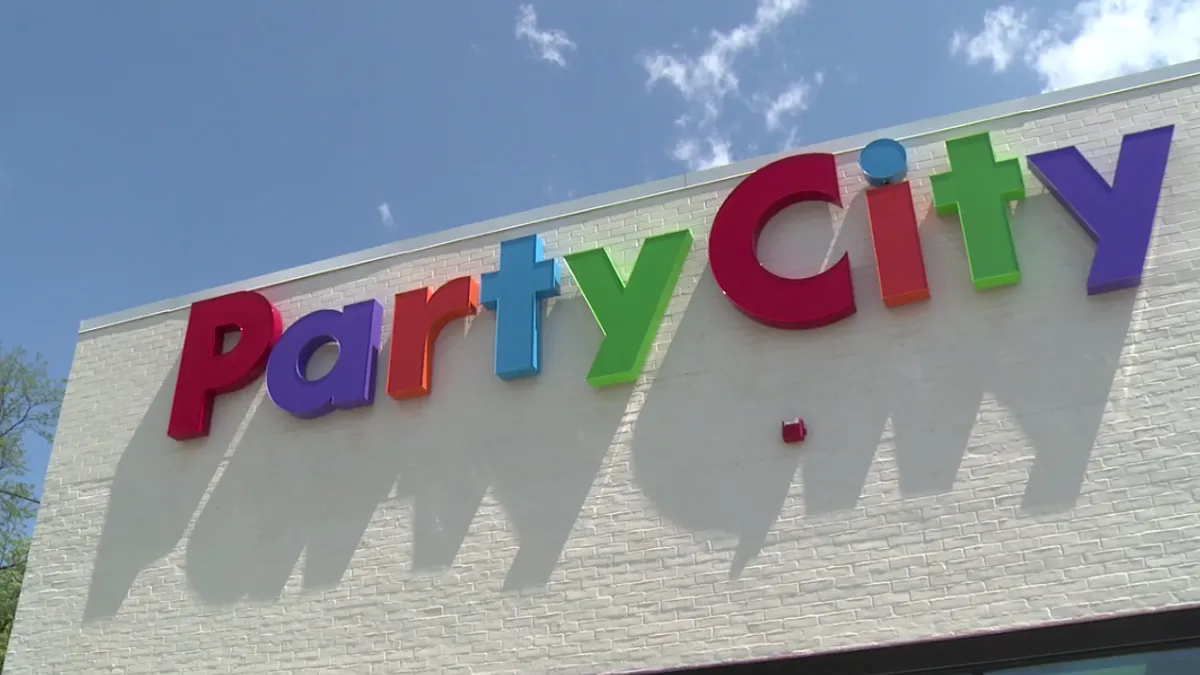Dive Brief:
- Party City nearly closed the gap with 2019 sales for the third quarter, with total revenue down just 1.2% to $533.8 million. Brand comparable sales were up 8.3% in Q3, driven by the balloon, birthday and entertaining categories.
- The retailer said sales of Halloween products beat expectations thanks to sales of decor and better-than-anticipated costume sales, amid a holiday period shaped by the COVID-19 pandemic.
- Retail revenue was down 16% for October while brand comparable sales were down 2.9%. The company said declines in Halloween products were partly offset by sales in core categories. Party City also posted a 30.2% increase in curbside, delivery and BOPIS sales.
Dive Insight:
Party City prepped for a disrupted Halloween season by scaling way back on its Halloween City pop-up stores. This year it opened just 25 stores, down more than 90% from 256 last year, though it added staff to each of its Halloween stores to help with fulfilling sales in other channels.
The retailer went into the season with clouds hanging over it. For one, its Halloween performance in 2019 was abysmal, with Party City caught off guard by a rapid shift of costume buyers to digital channels.
Another cloud was the holiday itself. The National Retail Federation and others projected Halloween product sales to fall this year as consumers adapted to social distancing and some municipalities banned traditional trick-or-treating altogether.
But Party City beat its own expectations for Halloween as well as market expectations. The company's 8.3% brand comp sales increase blew out FactSet consensus estimates of a 2.3% decline, according to MarketWatch. The company also surprised analysts with a positive earnings of 10 cents per share, with FactSet consensus projecting a loss of 32 cents per share. However, the retailer still posted an operating loss of $27.1 million, showing that financial challenges are likely to persist.
The top-line sales declines "are only modest and represent a remarkable bounce back from the strong negative numbers that were being posted during the depths of the pandemic," Neil Saunders, managing director of GlobalData Retail, said in emailed comments. However, he also noted that Party City was performing against a very poor Q3 in 2019.
Helping Party City, Saunders said, is an increase in celebrations of birthdays and other events. "This has been particularly important for families with children who have invested a little more in products like balloons and decorations to create a fun atmosphere at a time when parties, outings and gatherings with [friends] have become more challenging," he said.
That trend applies to Halloween as well. While the pandemic may have affected how families participated in Halloween, analysts still expected people to celebrate. Survey data from the NRF, for example, showed fewer people going to parties and trick-or-treating, but more that planned to decorate and carve pumpkins.
"In times like this, there's obviously been so much uncertainty, so much stress, people are looking for comfort and consistency and things that bring them joy," Katie Thomas, leader of the Kearney Consumer Institute, told Retail Dive in a previous interview.
GlobalData retail found Party City performed well in home décor and saw a reasonable performance in costumes, Saunders noted. And while its overall Halloween sales were down, its omnichannel efforts showed payoff with double digit growth.
"Looking ahead, Party City will not get back on track until the pandemic is over," Saunders said, noting that a second serious lockdown could damage sales. "However, in our view, the company is now in a better operational state to handle these things thanks to its omnichannel investments. It is also the case that Party City has continued relevance because consumers are celebrating events at home regardless of what is happening outside."













